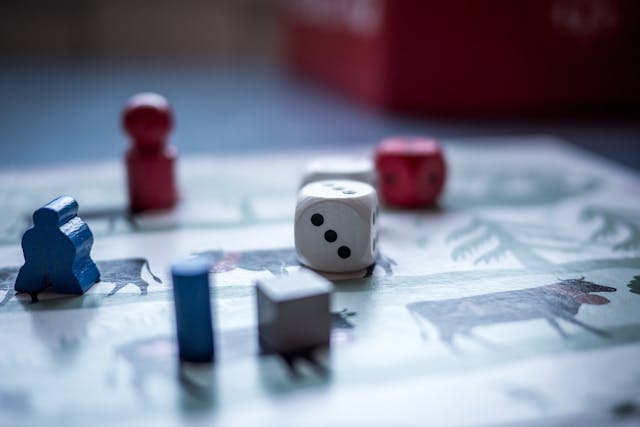The Art of Chance: How Game Design Taps Into Our Love for Uncertainty
Ever wonder why the roll of a die, a spinning reel, or the flip of a card can make your heart race? It is not just luck; it is design. From flashing lights to perfectly timed sound effects, games like poker and slot machines appeal to our brain’s love for risk and reward. This is not random; it is psychology wrapped in pixels.
Whether you are a gamer, a designer, or simply curious about why we chase “one more spin”, this is your inside look at how chance keeps us coming back for more.
Spinning the Reels: Why Popular Online Slot Games Capture Our Attention
There is something oddly thrilling about watching reels spin; that quick moment before they stop, when the lights flash and the sounds build, creates pure anticipation. This feeling of uncertainty is exactly what keeps players interested.
In gaming, not knowing what comes next is part of the fun. Take popular online slot games, for example. Their mechanics are simple: tap, spin, wait. Yet behind that simplicity lies a clever design that keeps our brains buzzing. Every spin brings a new possibility.
The visuals and sounds also play a significant role. Bright colours, celebratory jingles, and flashing animations trick our senses into feeling rewarded, even when the wins are minor. It is not just about winning but about the possibility of winning. That moment of uncertainty is where the real magic happens.
The Psychology of Uncertainty: Why We Crave the Unknown
Have you ever noticed how you lean in a little closer when you do not know what will happen next? That small tickle of uncertainty is more powerful than it seems. Researchers have found that unpredictability triggers bursts of dopamine in the brain. We get hooked not just by the reward itself, but by the surprise of maybe getting it.
In behavioural psychology, when we anticipate a reward but are unsure when or how big it will be, our brain lights up, our senses heighten, and we become more engaged. Studies using reward-anticipation tasks show that brain regions linked to motivation and learning, such as the striatum and amygdala, become more active under uncertain conditions.
This fascination with unpredictability extends beyond games. Think about choosing a mystery dish at a restaurant, watching a plot twist in your favourite show, or waiting for a text from someone you like. We are wired to crave the unknown, and that uncertainty becomes part of the thrill.
Building Suspense Through Design: Visuals, Timing, and Pacing
A game can be much like a film, with its slow build-up followed by sudden bursts of action. This is pacing at work. In game design, developers use rhythm to mirror cinematic tension from a tense poker hand to the dramatic moment when the final card is revealed.
Research shows that pacing in games refers to “the general order and rhythm of activities and events”, and timing strongly shapes how players feel. Designers carefully balance slow reveals with quick feedback so that players remain engaged. Animation timing, feedback loops, and visual cues maintain excitement.
For instance, a deliberate pause before the flop creates suspense in poker. In skill-based games, a brief hesitation followed by a rapid reward keeps the heart racing. By alternating between slower and faster moments, developers ensure that a player’s adrenaline does not fade too quickly.
Reward Systems and Reinforcement: The Science Behind the Win
Have you ever won something and immediately wondered when it would happen again? That feeling is no accident; it is psychology at play. Games use variable reward systems, meaning players do not always receive a prize or know when one will appear. This unpredictability keeps them returning for more.
Another factor at work is the balance of skill, chance, and perceived control. Players often believe their actions influence the outcome, even though randomness plays a large part. This blend keeps them engaged and invested.
Digital rewards such as coins, streak bonuses, and achievements mirror real-life incentives. You might earn a badge in one game or a bonus streak in another. These small wins trigger dopamine responses and encourage continued play.
In short, when a game provides rewards often enough to sustain interest and gives the illusion of control, players feel compelled to keep playing.
How Chance Shapes Modern Game Design
Today’s blockbuster games borrow more than just visuals from the casino floor. They also incorporate the thrill of chance.
Loot boxes, randomised events, and surprise drops have become common in mainstream titles. These features function much like casino wins. You never know when you will receive something valuable, and that uncertainty keeps you playing.
However, this design strategy raises ethical questions. When does engineered uncertainty become exploitation? Many researchers argue that the similarity between these mechanics and gambling is concerning, particularly when younger audiences are involved.
The positive side is that understanding how chance is used in games allows both designers and players to appreciate its artistic and psychological depth. Awareness turns what feels random into something meaningful. Whether developing a game or simply enjoying one, recognising how uncertainty works can make the experience richer and more conscious.
The Thrill Behind the Unknown
From popular online slot games to story-driven adventures, chance keeps us curious, hopeful, and engaged in the moment. When we understand how unpredictability fuels excitement, we stop viewing games as random distractions and start appreciating them as carefully crafted experiences designed to move us.

